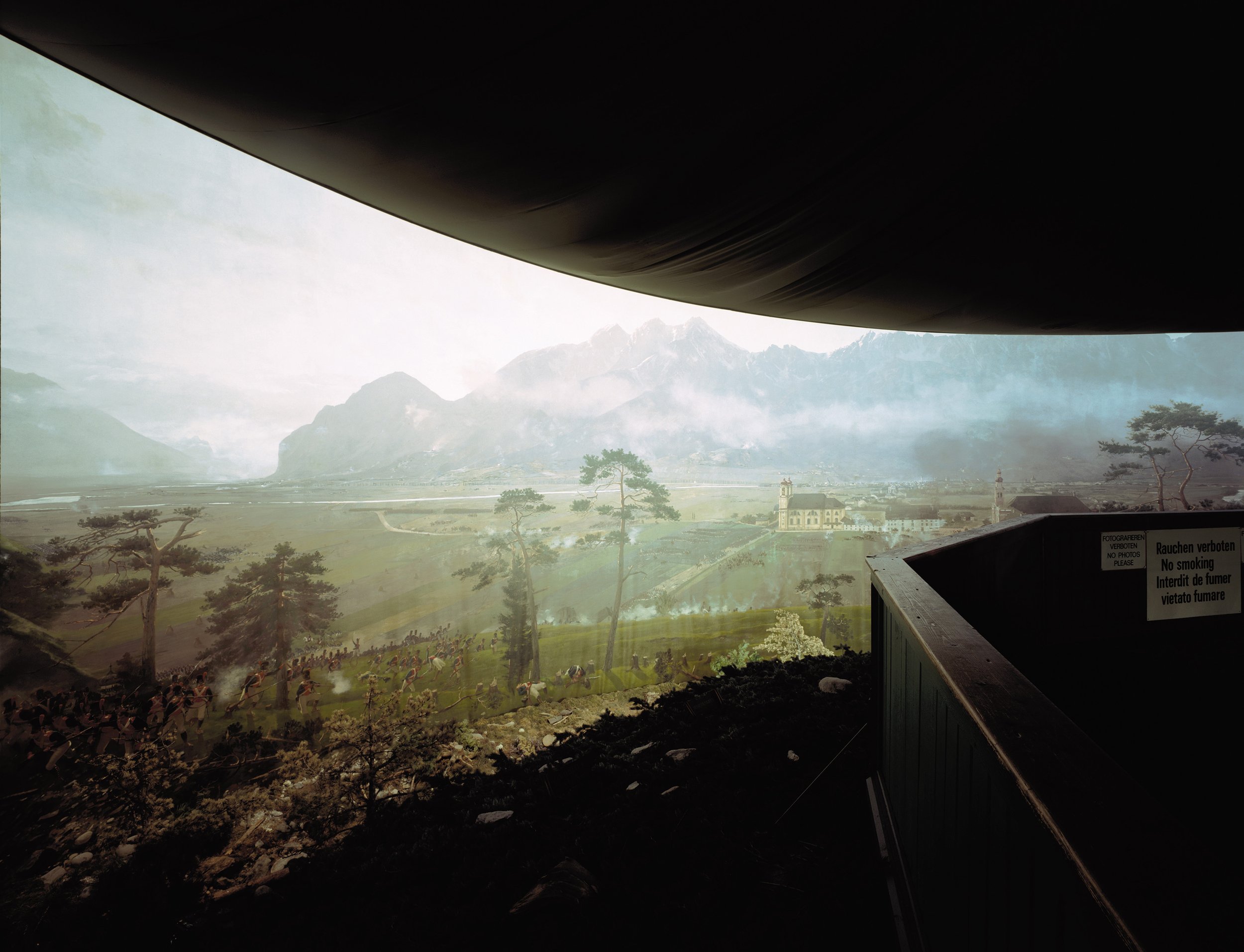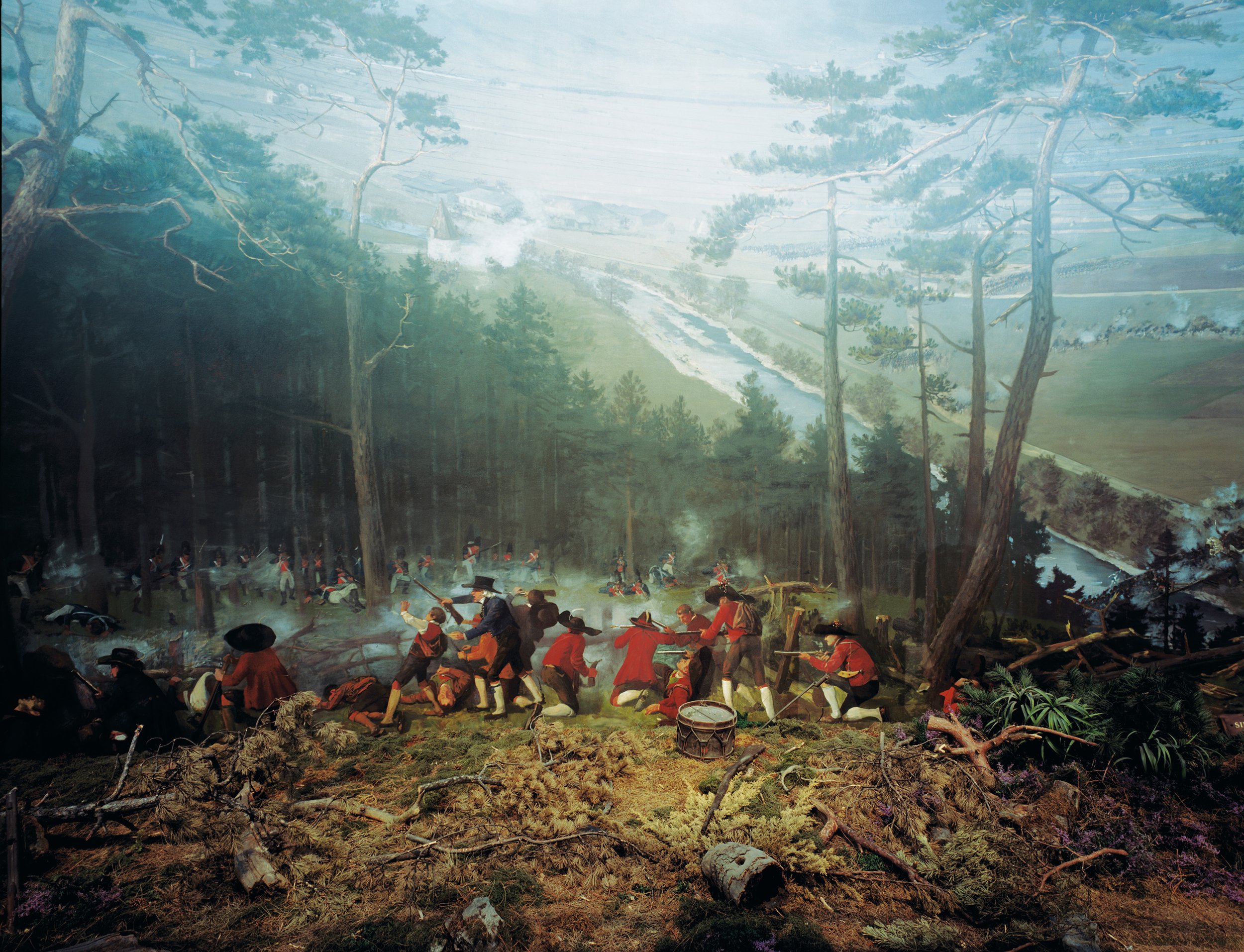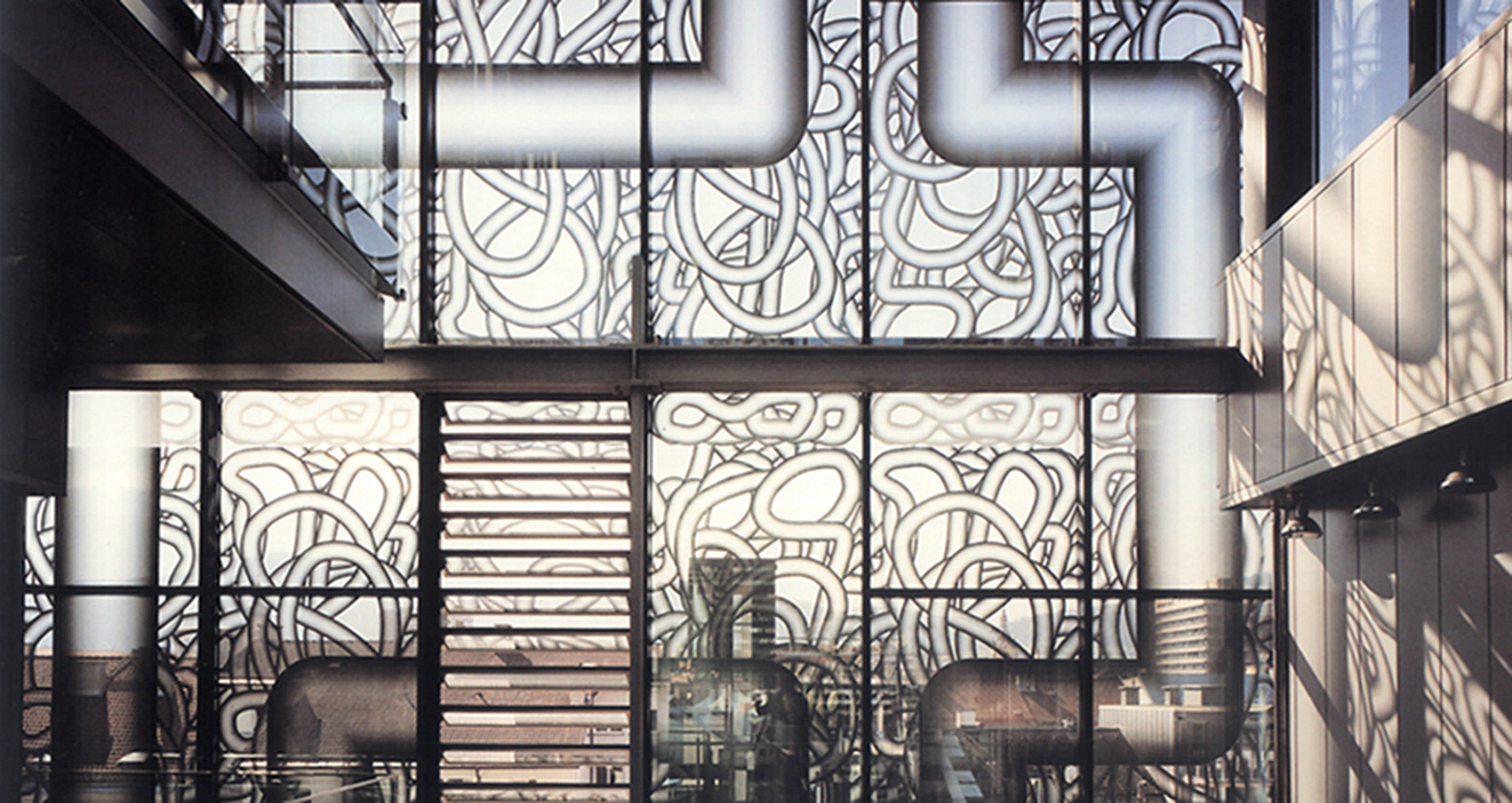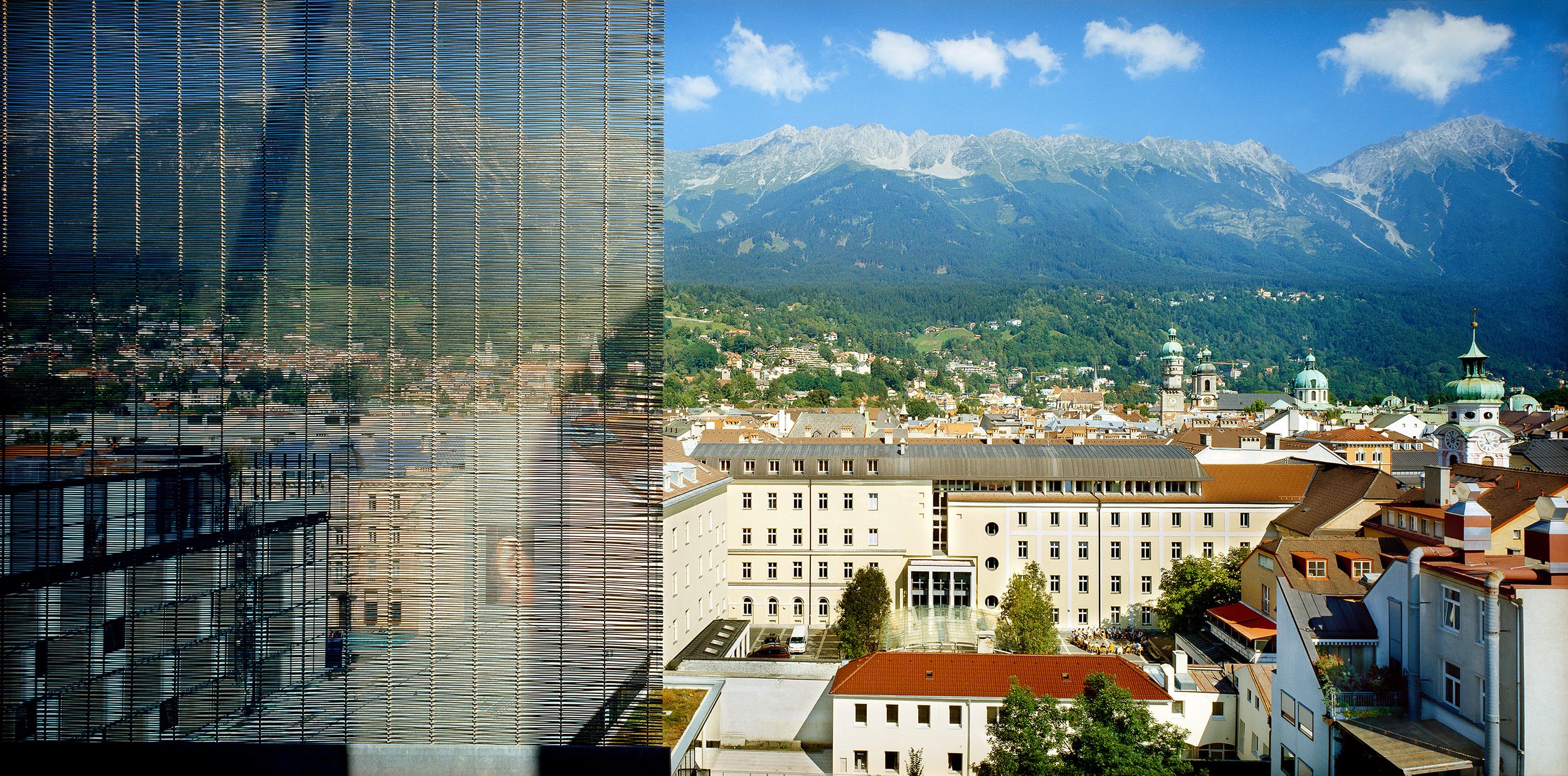RATHAUS INNSBRUCK
Por Silvia Eiblmayr y Edelbert Köb, comisarios. Fragmento del texto aparecido en el libro Rathaus Innsbruck.
(…) El foto-ensayo de Jordi Bernadó es tanto una obra de arte como la documentación final del proyecto "Conformación artística del nuevo ayuntamiento de la ciudad de Innsbruck". Se trata de un proyecto para el que el artista recibió "carta blanca", es decir, no fue un mero encargo de servicio fotográfico. Ni siquiera fue necesario expresar el deseo de que el artista atrajera a la gente a su perspectiva. La interacción entre el hombre y la arquitectura -incorporada a la naturaleza y a la historia- es el tema elegido por Jordi Bernadó, que también logró poner de manifiesto gráficamente el entrelazamiento de Dominique Perrault de su nuevo complejo arquitectónico con el tejido urbano más amplio.
La obra de Bernadó sirve para documentar artísticamente un proyecto que pretende entenderse como "integrador" en tanto que es el resultado de la cooperación de dos disciplinas -la arquitectura y el arte- cuya unidad se ha perdido hace tiempo y para la que había que volver a encontrar formas adecuadas de cooperación. Esta integración rara vez se produce, e incluso sólo en condiciones especialmente afortunadas, como las que se dieron en Innsbruck. Requiere un cliente decidido y un presupuesto adecuado, un arquitecto comprometido y con aprecio por el arte, así como habilidades de supervisión y ejecución profesional —organizativamente y en términos de comisariado. (…)
Written by Silvia Eiblmayr and Edelbert Köb, curators. Excerpt of the text published in the book Rathaus Innsbruck
(…) Jordi Bernadó’s photo-essay is both a work of art and the concluding documentation of the project: “Artistic shaping of the New Town Hall of the City of Innsbruck”. It is a project for which the artist received “carte blanche”, in other words, there was no mere photographic service assignment. The wish that the artist would draw people into his perspective did not even have to be expressed. The interaction of man and architecture —embedded in nature and history— is the theme chosen by Jordi Bernadó, who also succeeded in bringing out graphically Dominique Perrault’s interweaving of his new architectonic complex with the wider, urban fabric.
Bernadó’s work serves to artistically document a project that is intended to be understood as “integrative” in that it is the result of a cooperation of two disciplines —architecture and art— whose unity has long since been lost and for which adequate forms of cooperation had to be found again. This integration seldom occurs, and even then only under particularly fortunate conditions, as those which existed in Innsbruck. It requires a determined client and a corresponding budget, a committed architect with an appreciation for art, as well as skills of professional supervision and execution —organisationally and in terms of curatorship. (…)









